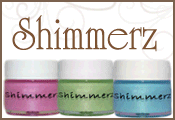The room setting:
Refinished basement at our neighbors home. The idea was to use an antique, refinished workbench containing all kinds of knicks and cuts from years of use. I was looking for a rustic surface to photograph some of Marv's belongings on.
The lights:
Typical can lights in the ceiling - which we believe are incandescent. Above the workbench were two sets of tracks about 24" wide with three small lights - appeared to be "art lights" with a daylight cast. These were aimed at two paintings on the wall, which we removed, and used clothespins to secure a backdrop cloth to the nails.
I am pretty sure I took this photo with my Nikon D80 on full automatic - no flash. Very dark. I switched to manual and metered my camera to zero.

It was obvious I would need a KEY light. I used a clamp light that has a 60 watt equivalent full spectrum bulb. There was nothing to clamp it to, and pretty much I set my light down on the far end of the work bench to my right. I was worried about using a daylight bulb, since I wanted a warm glow for some of my shots, but things worked out as I wanted. I believe I metered up once or twice, and left it at that setting for the rest of the shoot, once my lights were established.

I should mention I shot my photos at aperature priorty, with a mix of manual and autofocus. I also did not change my white balance and left it on the default: incadescent. I wanted a warm look to my photos - and the sample shots I took were pleasant, so I saw no need to change the white balance.
Too much shadow on the left, so a fill light was added. Of course I forgot the floor lamp at home that I intended to use, with a daylight bulb to match my key light. I was taught at the workshop that all your lights should match. We ended up using a table lamp on hand, removed the shade, and it had a compact flourescent, which seemed to give a blue cast, definitely not yellow. Carefully we tipped it on its side, propped where needed so it would not roll off, and aimed as desired.

I was so glad for my friend, Deb, and her help. Truly, one cannot do such shoots without an assistant. I used my car windshield reflector as a reflector in front of my key light - the idea was to bounch some light back towards the light and reduce glare on my photos.
The final result. I love this photo collage, which is very true to color do to the added in lighting.

I have to say how blessed I am to have an elderly friend who has collected antiques for years. She loaned me marbles, depression era, an old tin horse and sheep, and small, red leather kid boots - one could not ask for any better props than these!
Switch around...when we changed our backdrop and table to the burlap - the lighting changed. The casting of the light became yellow - because of the material. Seriously, we did not change any of our lighting. It WAS the look I had envisioned for these photos - got to give God praise for that! This photo below captures the true "essence of Marv".

I did move my fill light towards the back of the table to change my shadows a bit, at which it is then referred to as a rim light.
I don't know if this information is of any help to you or not, but for those of you who asked...this is how I accomplished my Saturday photo shoot.
















1 comment:
This is truly a special gift you are doing for the family.I love that you share the things you learn with us all.
Donna
Post a Comment